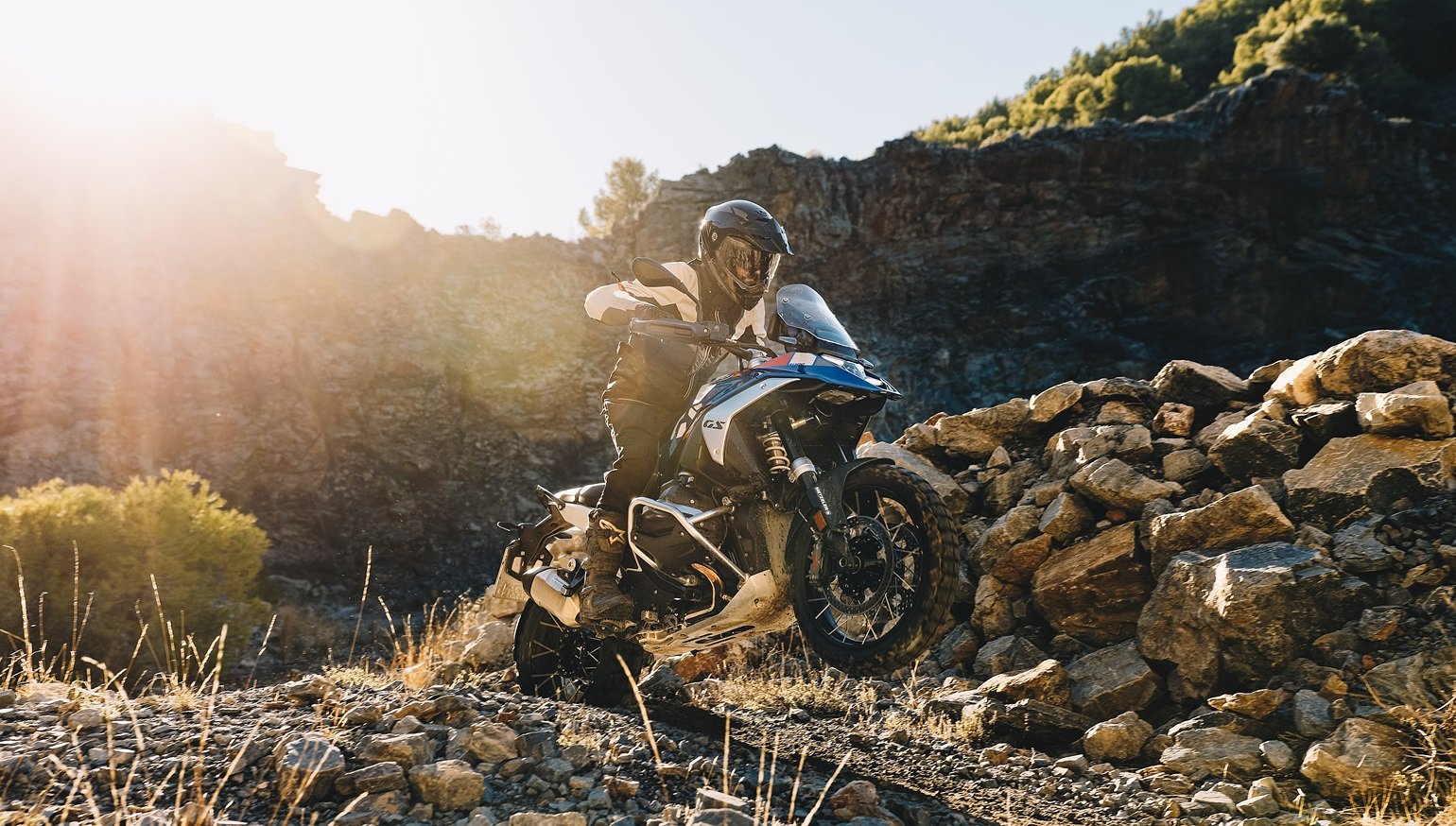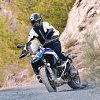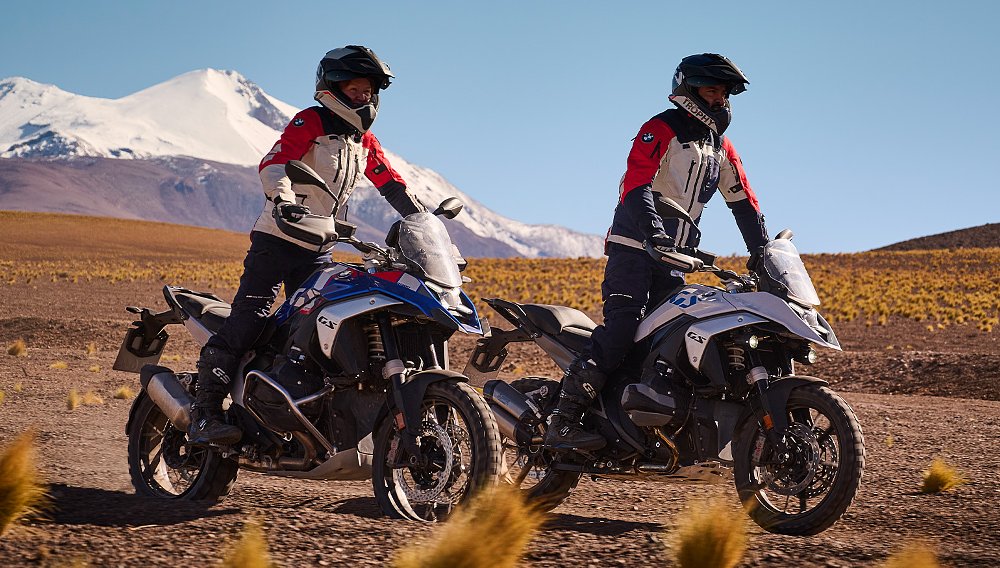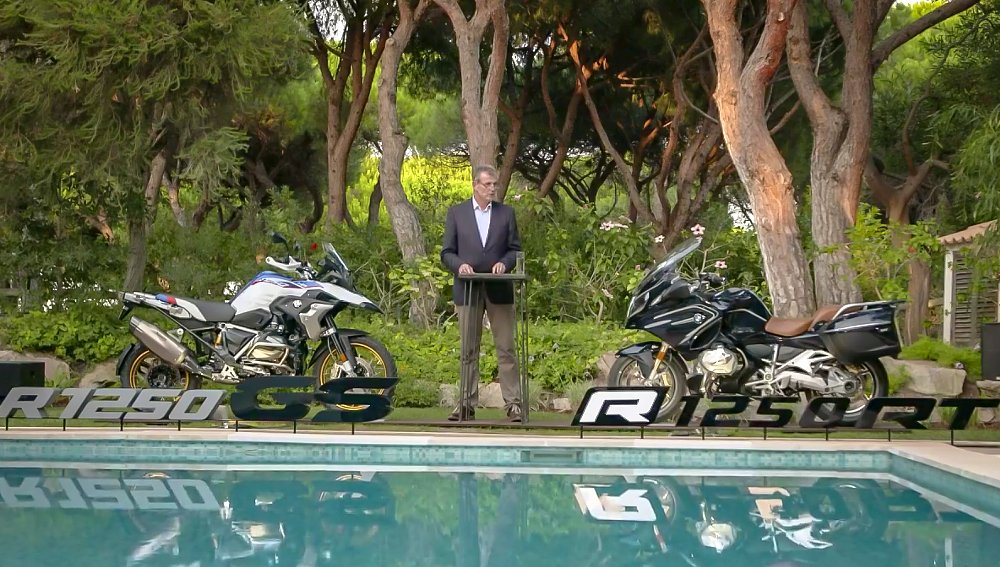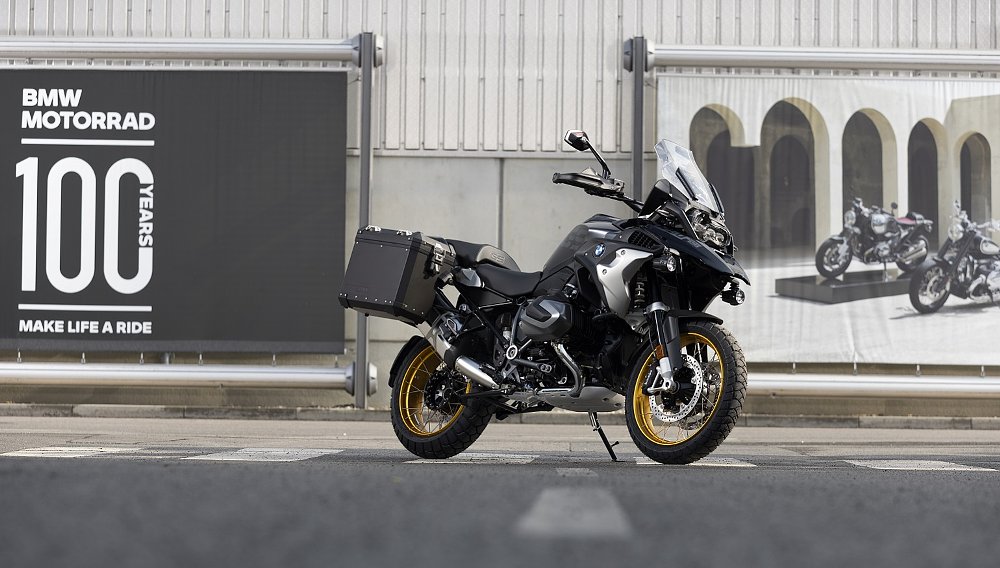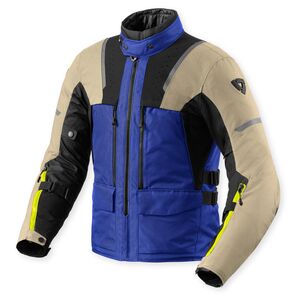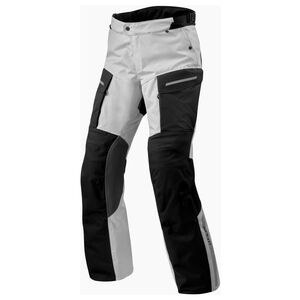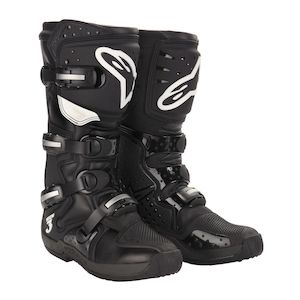The legend of BMW’s flagship adventure bike — often referred to simply as the GS — requires little introduction. If you’re new to motorcycling and made the grave mistake of admitting GS-ignorance to a riding buddy, expect them to laugh in your face and then repeat the legend of this machine from way up on their highest of horses. The story goes something like this:
In 1980 some engineers at BMW conspired to take a medley of parts from their well regarded touring bikes and glue them together with some long-travel suspension in a way that would enable a machine to handle both Gelände and Straße. That is, off-road and road, in Germanspeak.
In the 40 years since that experiment birthed the R 80 G/S, the bike has flourished in sales, size, and mythology. What started as an 800 cc, 450-pound, 50-horsepower side project, evolved into a 1,254 cc, 549-pound, 136-horsepower paragon of adventure riding. Not to mention, BMW’s best selling motorcycle by a country mile.

But that most recent iteration — the R 1250 GS — is now due to be replaced by the model’s most radical redesign in some 20 years — the 2024 R 1300 GS. According to BMW, the new GS is lighter, faster, more capable, more comfortable, easier for newer riders, better for experienced riders, shorter, taller, softer, and stiffer. It might even fix your receding hairline, heal your marriage, and make your children less of a disappointment.
Suffice it to say, there is a lot going on with this new motorcycle. Armed with a notebook full of questions and a lifetime of disappointing my parents, I headed to Málaga, Spain to test the bike and get a glimpse into BMW’s vision for the future of adventure riding.
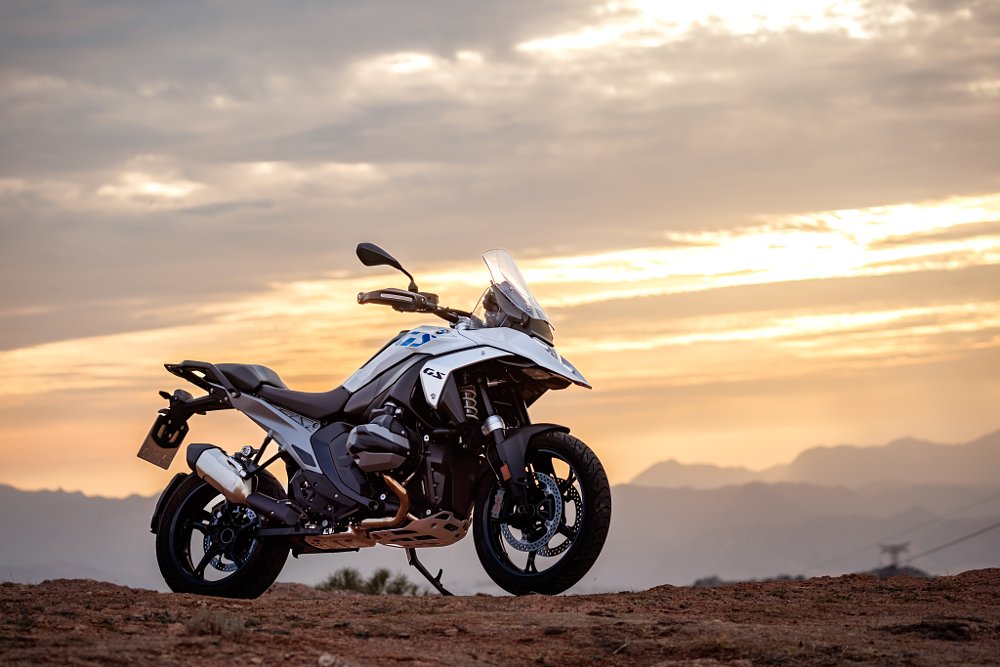
What’s new with the BMW R 1300 GS
The simple answer of what has changed from the R 1250 to the R 1300 is… everything. Other than a couple throttle bodies, a handful of bolts, and some electrical connectors, we were told the new model does not share a single part number with its predecessor. The engine, the frame, the suspension, the bodywork — all new. Not to mention a long list of additional technology never before seen on a GS.
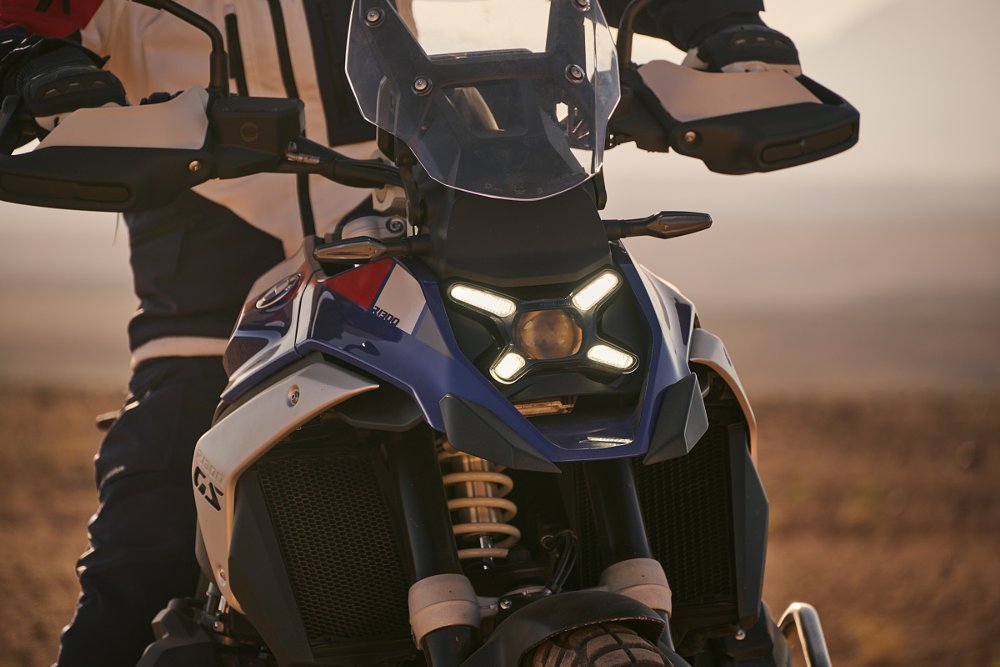
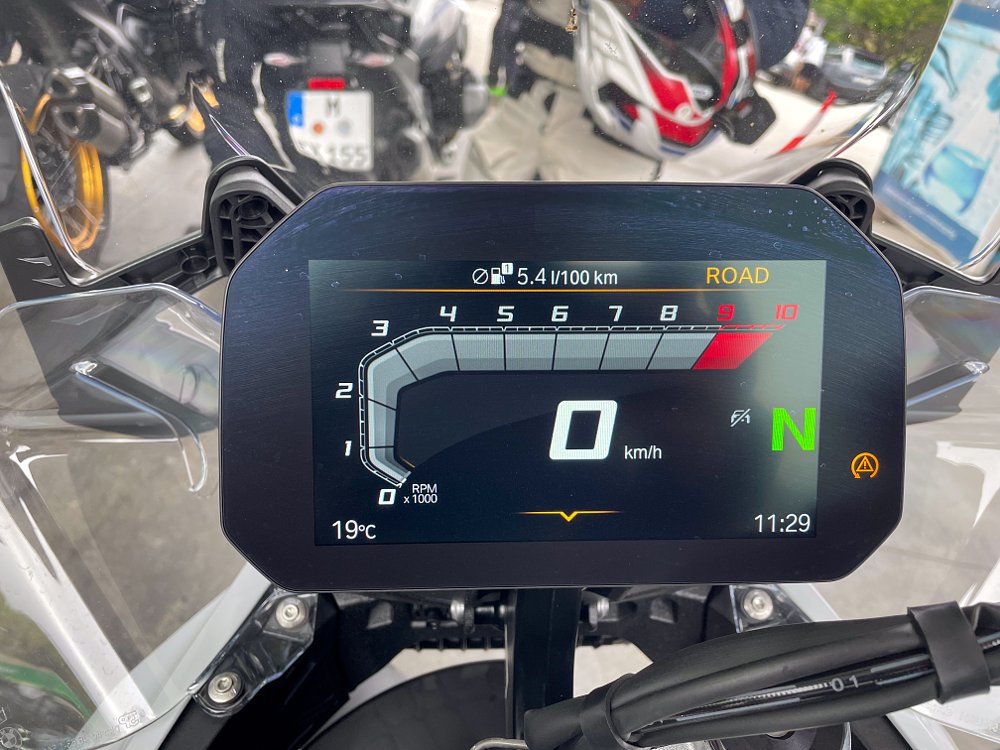
The new engine, of course, retains its iconic, flat-twin layout. It also keeps BMW’s innovative “ShiftCam” technology which enables variable valve actuation for optimized performance throughout the rev range. But, the valves are now larger and compression is higher, helping create the most powerful boxer engine BMW has ever built.
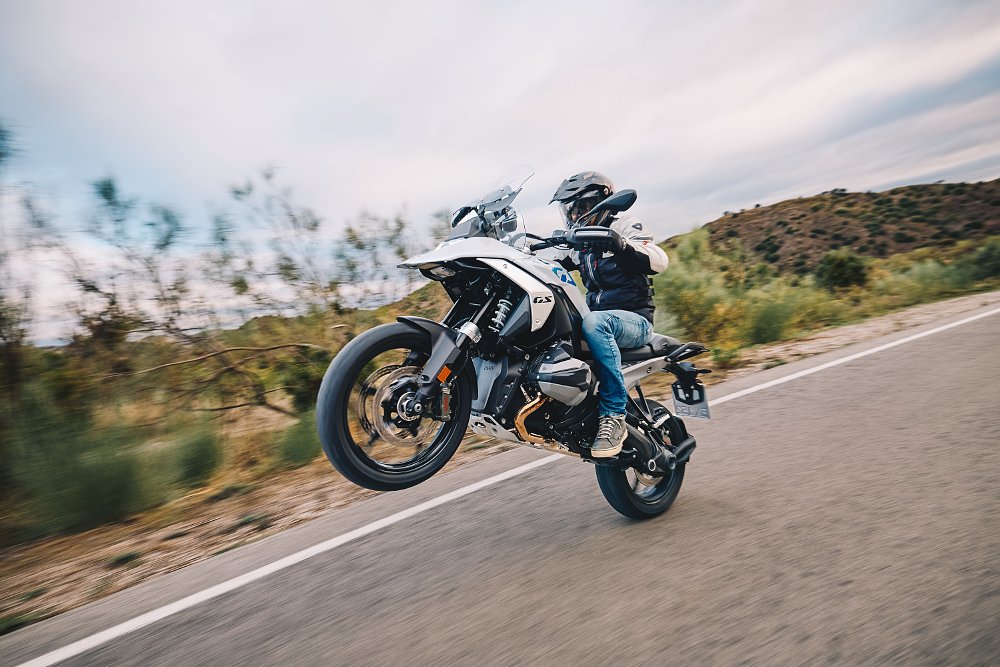
Wrapped around that beating heart is a completely reworked frame and suspension system. Gone is the steel-tube skeleton — now replaced by a sheet metal main frame and a separate, aluminum subframe. Said to be lighter and stiffer than the previous version, the redesigned frame ties to the redesigned front and rear suspension in a way that BMW claims provides better balance and more direct control for the rider.
Speaking of which, perhaps no feature other than the boxer engine has come to define the GS more than its unique telelever and paralever suspension system. The gist of this technology is that it uses a series of links and pivots to better isolate the opposing forces of suspension movement. So, while most bikes dive under hard braking and squat under heavy acceleration, the GS suffers from no such mortal flaws. The downside to this setup is that it adds weight, complexity, and for some riders, steering vagueness — particularly when navigating off-road. Fear not, say the engineers in Berlin, they’ve got a thing for that, too.
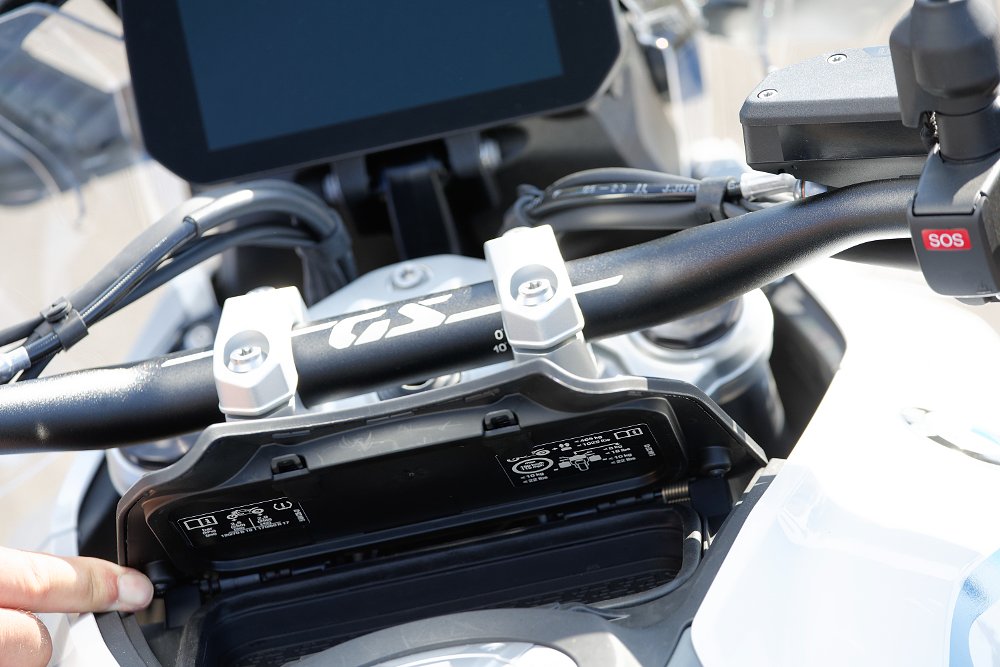
To address the lack of feedback, BMW added a “flex element” (basically a thin metal plate) between the handlebar mount and the top of the fork. They also revised the paralever system, which is now longer and mounts to the frame with a solid, continuous axle. These hardware tweaks are supposed to allow the suspension, fork, swingarm, and frame to be connected more rigidly, while maintaining the smoothness and balance of a levered system.
What’s more, BMW is offering four versions of their updated suspension. There’s the Series option (manual adjustment only) and three variations of DSA (electronic adjustment). You can choose from standard DSA, which provides provides automatic calibration of damping, spring rate, and preload, the DSA Sport Suspension, which provides the same automatic calibration but adds 0.8 inches of travel and added stiffness for more off-road capability, and finally there’s DSA with Adaptive Vehicle Ride Control.
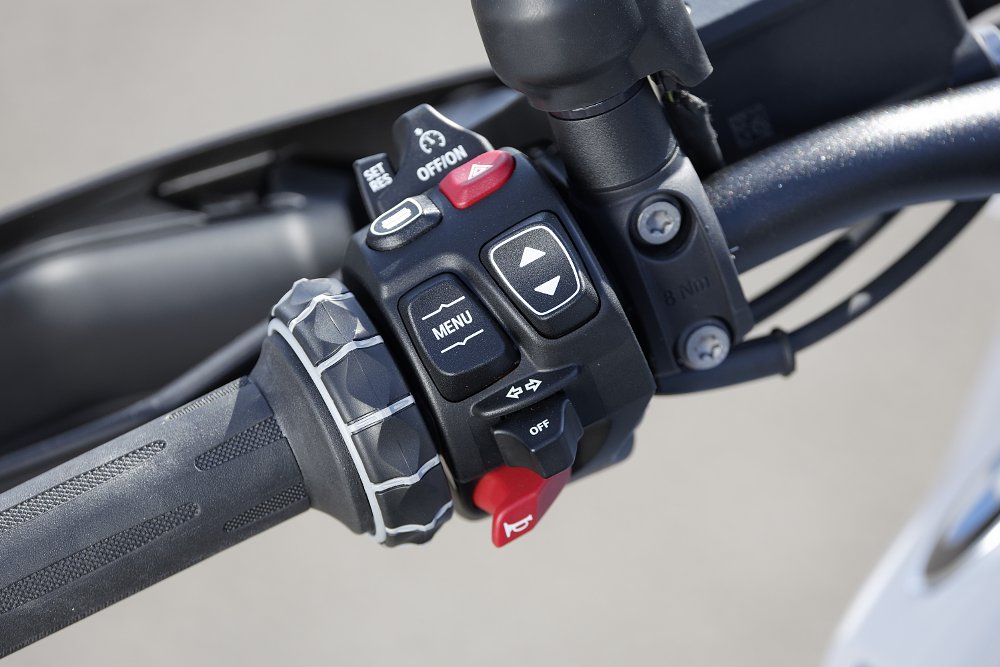
The AVRC option has the same travel as standard DSA but adds the ability to automatically reduce seat height by 1.2 inches when the bike slows down or comes to a stop. In theory, this makes it easier for riders to mount or dismount the bike and touch their feet down while stationary without sacrificing ground clearance while moving. And since there’s nothing less gentlemanly or ladylike than heaving a bike up and down, the AVRC also kicks in when you deploy the optional centerstand to make raising and lowering the bike an effortless affair.
The list of changes, options, variations, and mutations continues to infinity and beyond. You can add radar-assisted cruise control and blindspot detection, there are four new windshields, including some that are adjusted electronically, there’s a new switch cluster and updated menu system, there are four new seat options that vary in height, heatability, and adjustability, there’s a new phone storage area with a USB-A port built into the gas tank, there’s a smaller gas tank (5.0 gallons, down from 5.3), there are three different sets of wheels, three different handlebars, a handlebar riser, three different types of levers, and, of course, that new headlight.
And despite all the R 1300’s more-ness, BMW is proudly claiming that it weighs 523 pounds with a base MSRP of $18,895 — making it 26 pounds lighter and about $1,000 more expensive than its predecessor. But, when pressed for specifics, the project manager admitted the weight loss being touted is based on the most stripped-down version of the R 1300 GS that’s available. Apparently, with comparable trims, the new GS is more like 4.5 pounds lighter than the old one. That still counts as weight loss, sure, and it offers a lot more performance per pound, but the actual difference in heft and price is going to depend entirely on how your bike is equipped.
If you’re starting to feel a warm liquid ooze out of your ears, don’t panic — it’s just your brain. And as overwhelming as all this information can be, it shows how the bike can differ quite drastically from one version to the next. What’s more, it’s important to convey just how thoroughly BMW overhauled this motorcycle because it plays a surprising role in what the bike actually feels like to ride.
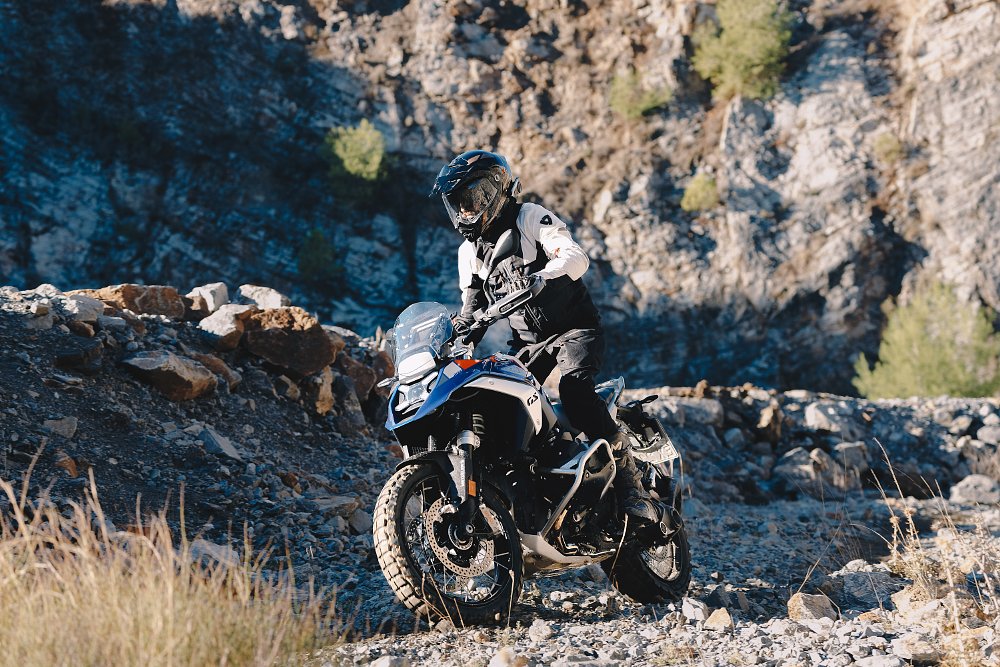
Riding the R 1300 GS off-road
The morning after arriving in Spain, I was handed the key fob to an R 1300 GS Trophy with the Premium Package and Enduro Package Pro — an as-tested combination that rings in at $25,245. For that, you get to bathe in a catalog of options that include a Racing Blue Metallic paint job, tubeless spoked wheels, crash bars, radiator guards, a taller seat (34.2 inches), DSA suspension, a quickshifter, and additional riding modes, such as Dynamic Pro and Enduro Pro. But, no radar cruise, adaptive ride height, or electric windshield. Somehow I’d manage.
The first thing I noticed in person is that the bike looks lighter. The tank is slimmer, the profile is sleeker, and despite it still being a Very Large Motorcycle, it carries itself with an airiness we don’t normally associate with the GS grande. It was interesting, then, as we rode away from the hotel, toward the rutilant hills floating above Spain’s Costa del Sol, that the bike didn’t necessarily feel that much lighter. In fact, it didn’t feel much different at all. The engine was smoother and seemed to spin up faster, but beyond that everything was surprisingly familiar.
We eventually made our way to Enduropark Andalusia, a private off-road riding area nestled in the shadows of an old stone quarry. There, we were presented with short sections of rocky singletrack, some loose, off-camber hills, and a handful of ADV obstacles like a whoop section, tabletop, and small water crossings. Truth be told, everything we tackled was quite tame and by no means pushed the GS to anywhere near its limits. This made it more difficult to assess what the bike was doing well or doing differently, but a few things did stand out.
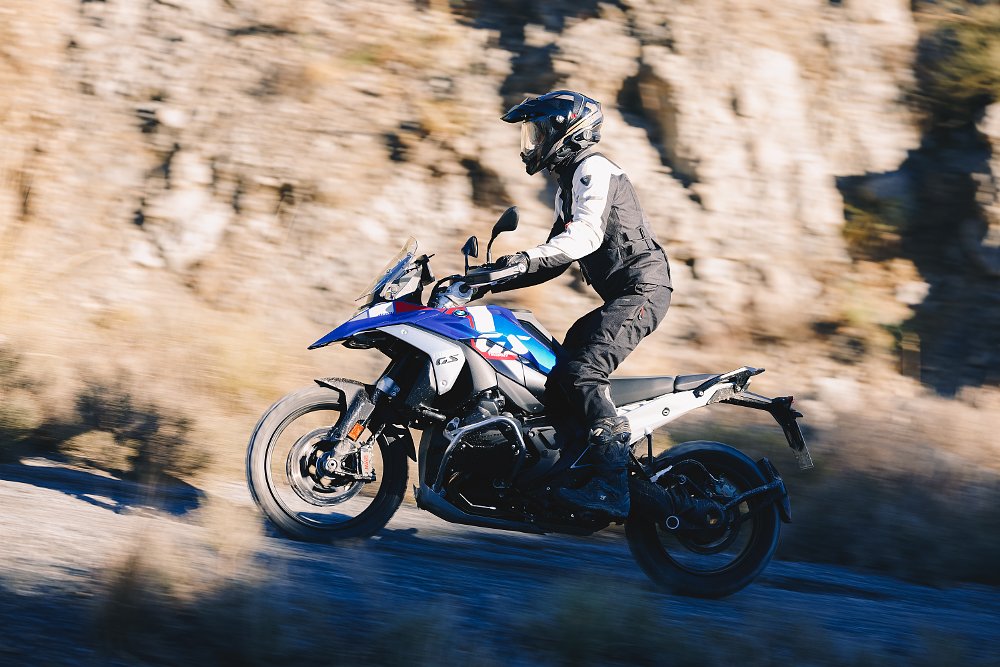
One is that the slow-speed dynamics of the R 1300 GS are truly fantastic. The steering is light and precise, the engine is extremely luggable, throttle response is damn near perfect, and overall the bike danced around tight turns and over marbled trails with remarkable grace. This has long been the nature of a GS off-road, but the new bike feels more direct and nimble, even if it only improved by a little bit on what was already great. And while the bike didn’t feel noticeably lighter off-road, the svelte front-end is a big improvement for visibility, allowing the rider to peer around the edges of the motorcycle and pick the best line with ease.
After a handful of loops around the park, we made our way out onto a network of dirt roads that traced arid ridgelines from the mountains to the sea. Beautiful as they were, this was also very mild terrain — the sort a determined Gold Wing rider could probably manage. But, if nothing else, it did allow for some experimentation with the GS’s many electronic rider aids.
As part of the Premium Package, Dynamic Pro and Enduro Pro ride modes are added to the standard Eco, Rain, Road, and Dynamic options. The “Pro” modes allow you to customize your power delivery, traction control, and ABS settings. But as someone who enjoys sliding a bike around dirt corners (not very well, mind you), I was surprised by how intrusive the electronics still were.
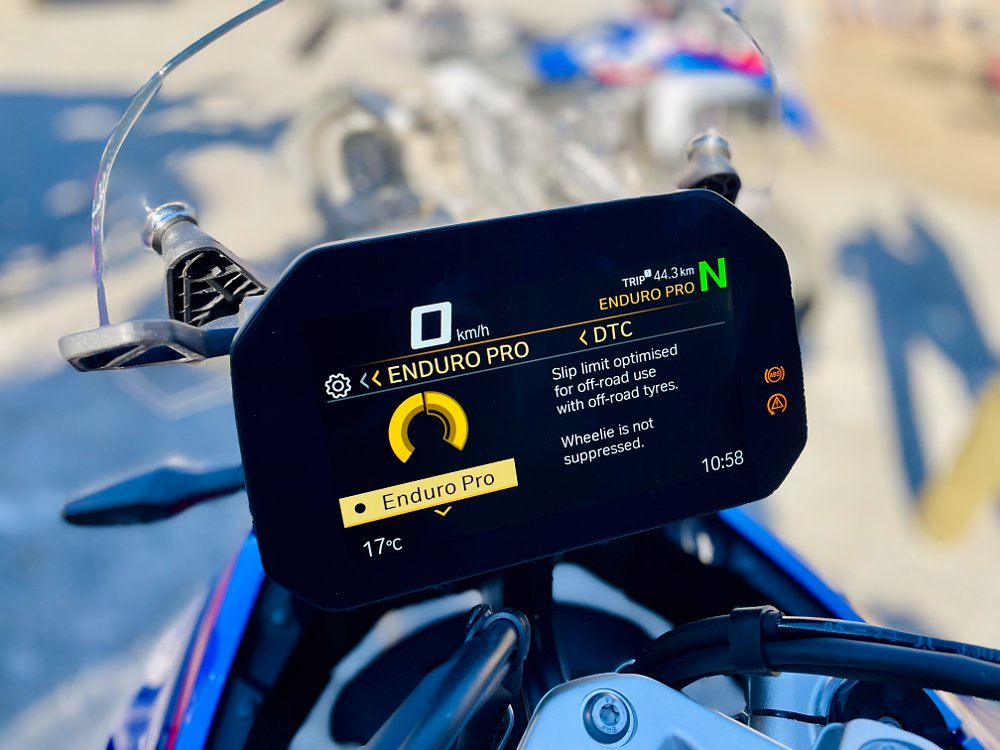
Enduro Pro allowed the most wheel slip but I could still feel it regularly cutting power as I blipped the throttle on corner exit or as we climbed up loose sections of gravel. To avoid this, I found myself just turning traction control off entirely, which is easy enough with a few clicks of the new “hamburger” button on the left switch cluster. This is by no means a testament to my skill or to suggest that turning TC off is the fastest, most efficient way to ride off-road, but I think it’s more fun and at the end of the day that’s kind of the whole point.
On the flip-side, the electronic wizardry surrounding the brakes are excellent. ABS can be turned off entirely, tuned for various levels of intervention, and, as a new feature, the brakes are linked whether you apply the front or rear brake in all modes other than Enduro Pro. On a couple of brief, steep descents, I marveled at how the linked system kept the chassis stable and prevented the bike from pushing or sliding even when traction was compromised.
By the time we arrived back at the hotel, I was torn. The GS continues to be a magical machine that defies the expectations inevitably raised by its size and weight. The suspension is great, the handling is sublime, and the engine is one of the best in all of motorcycling. But, in our limited testing opportunities, I didn’t feel like it broke any new ground in terms of off-road capability — especially considering all the changes that have taken place.
In an era filled with rally-ready adventure bikes like the Ducati DesertX, Yamaha T7, or even BMW’s own newly updated F900, perhaps the age of the big GS’s dirt dominion has officially come to an end. It is still more capable off-road than it gets credit for, just not quite as boundary-pushing as I’d hoped.
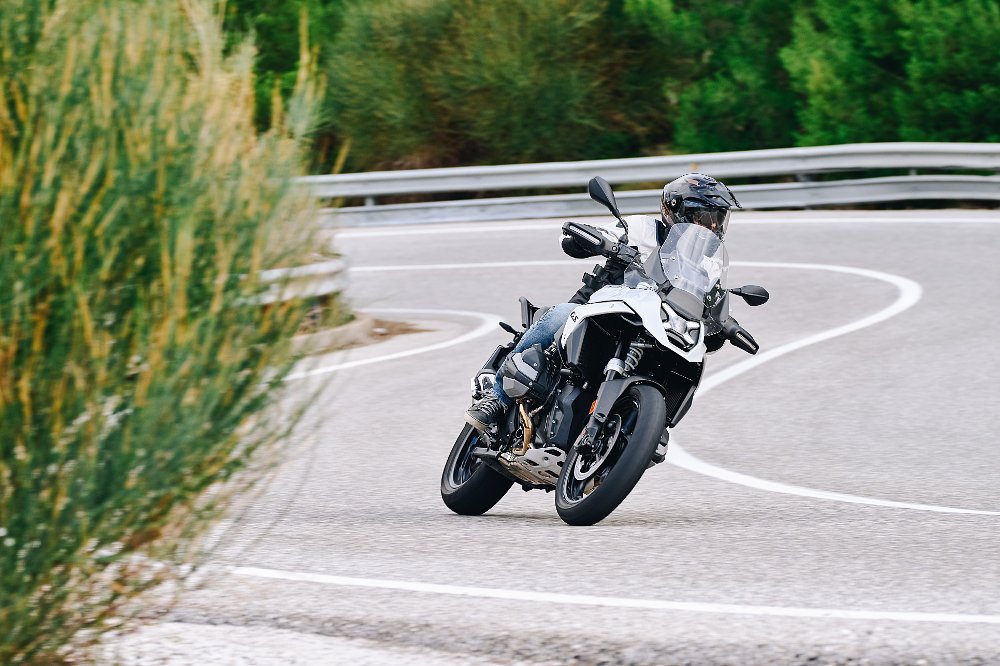
The R 1300 GS on the road
For whatever lack of enduro testing opportunities BMW provided, there was no such modesty when it came to pavement. Over the course of two days, we rolled through twisty roads, open highways, and the narrow, urban streets that help make Spain’s southern coast so charming. Given such a heroic undertaking, we swapped out our GS Trophy models for a more touring-oriented trim. What started life as a standard R 1300 GS, in Light White, was anointed with Premium and Comfort packages and a luxurious MSRP of $24,150.
While it’s a somewhat depressing realization that you’ll probably never spend less than $20,000 on a new GS again, the R 1300 is the kind of motorcycle that works hard to justify its price tag. Smooth, fast, comfortable, and positively dripping with technology. Even beyond the reaches of Spain’s sun-kissed coast, it’s hard to imagine a two-wheeled, road-going scenario that wouldn’t be made better by this machine.
Need to ride cross country as you follow Taylor Swift’s concert from town to town? Raise up your electric touring windshield at the push of a button, throw on adaptive cruise control, and let Herr Gelände Straße do the work as you sit with a relaxed wrist in a delightful, turbulence-free bubble.
Trying to safely zip through traffic so you can arrive early and get all the best merchandise at a Taylor Swift concert? Rip through the gears with a much-improved quickshifter, weave through traffic with effortlessly light handling, watch as cars get small in your blind-spot-detecting side mirrors, and stop on a dime when you find the perfect parking spot thanks to sharp, communicative brakes.
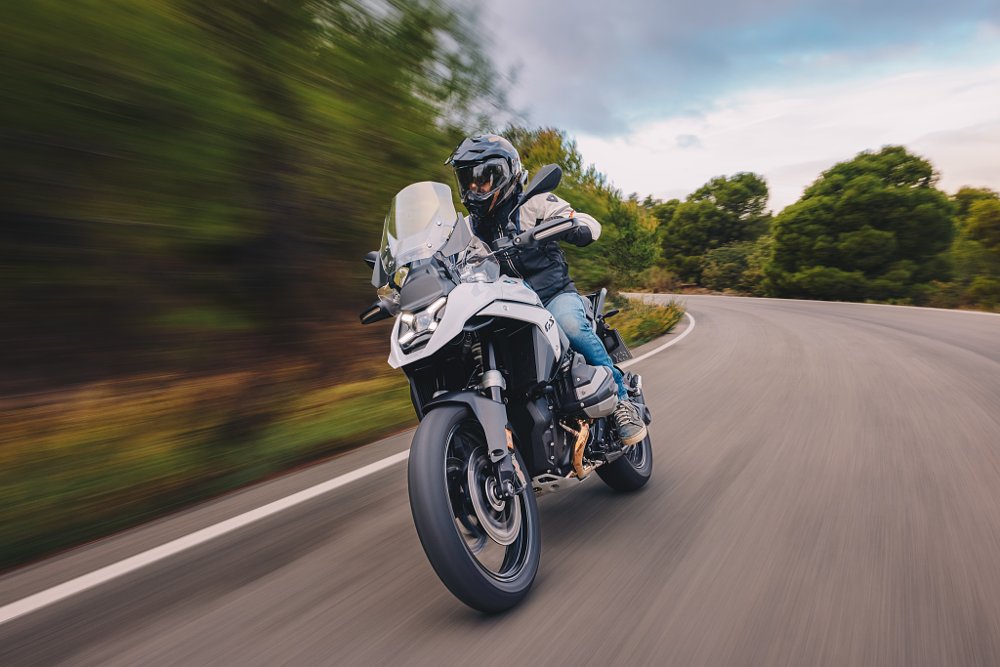
And what if you find yourself needing to outrun the paparazzi as you leave a Taylor Swift concert with Miss Americana herself? Turn on that heated passenger seat, let the DSA suspension automatically adapt to your combined weight, and say sayonara to those pesky paps as you unleash the 96 foot-pounds of torque that is constantly available between 3,600 and 7,800 rpm.
The possibilities are endless.
All of these features, like the lyrics of a Taylor Swift song, work flawlessly — harmonized by years of experience and refinement. I’m sure people can (and will) complain that they don’t like the looks of this new GS, that the engine is too smooth now, or the electronics are too complicated. But, objectively, this is a fantastic motorcycle and one of the best street bikes that money can buy.
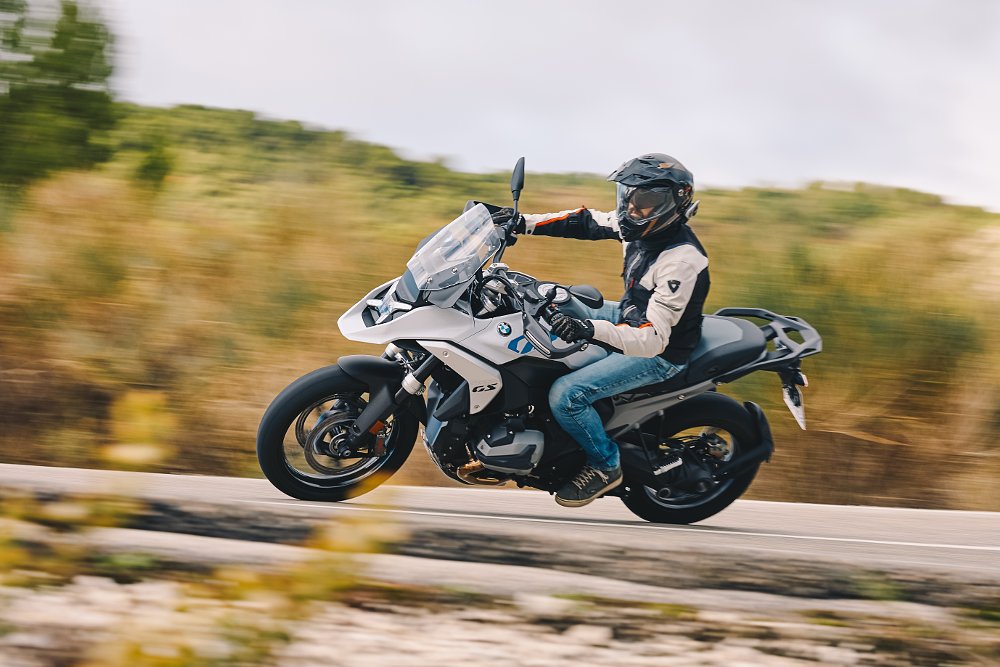
Final thoughts
The R 1300 GS is a difficult bike to review. The sheer number of options, packages, colors, and settings mean there are literally thousands of ways you could configure one of your own. The seat height, for example, can vary by three inches depending on saddle and suspension choice. Comfort depends largely on handlebar, windshield, and lever selection. Not to mention acceleration, braking, and handling — all of which transform at the flip of a switch. If you hopped on one of these at random, you might think the bike is too short, too tall, too fast, or too slow. But with the right combination of buttons and banknotes, everything has the potential to be made just right.
From what I’ve experienced of the foundational elements — engine and chassis — this new bike is a worthy successor to the GS crown. It’s not as radically different from the R 1250 GS as the spec sheet would suggest, it’s not a middleweight ADV killer in terms of off-road performance, and it’s probably not going to revolutionize the category the way some of its predecessors have in the past. Fortunately, it does have the potential to fix your marriage. As long as your spouse’s primary complaint has been that you never spend enough money on your motorcycles.
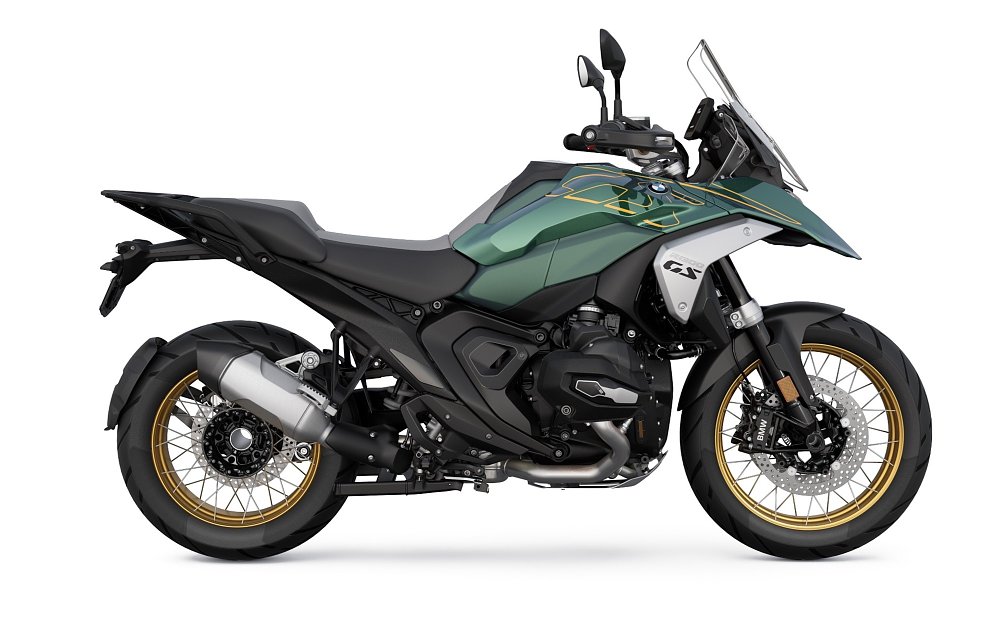
In all seriousness, this is the best adventure bike BMW has ever made. In ways both big and small, it continues a four-decade mission to build a motorcycle that can do anything, go anywhere, and be ridden by anyone. It’s the sort of bike that encourages you to dream up trips to the edge of the world and still puts a smile on your face for the ones around the corner.
Such is the story of the GS, even 40 years on.
| 2024 BMW R 1300 GS | |
|---|---|
| Price (MSRP) | $18,895 (base model) |
| Engine | 1,300 cc, air and liquid-cooled, four-valve, boxer opposed twin |
|
Transmission, final drive |
Six-speed, shaft |
| Claimed horsepower | 145 @ 7,750 rpm |
| Claimed torque | 110 foot-pounds @ 6,500 rpm |
| Frame | Steel, two-section, with bolt-on rear frame |
| Front suspension | BMW EVO Telelever, adjustable for preload and damping; 7.5 inches of travel |
| Rear suspension | BMW EVO Paralever, adjustable for preload and damping; 7.9 inches of travel |
| Front brake | Dual radial-mount four-piston calipers, 310 mm discs with ABS |
| Rear brake | Two-piston caliper, 285 mm disc with ABS |
| Rake, trail | 26.2 degrees, 4.4 inches |
| Wheelbase | 59.8 inches |
| Seat height | 33.5 inches |
| Fuel capacity | 5.0 gallons |
| Tires | 120/70R19 front, 170/60R17 rear |
| Claimed weight | 524 pounds |
| Available | Early 2024 |
| Warranty | 36 months |
| More info | bmwmotorcycles.com |




